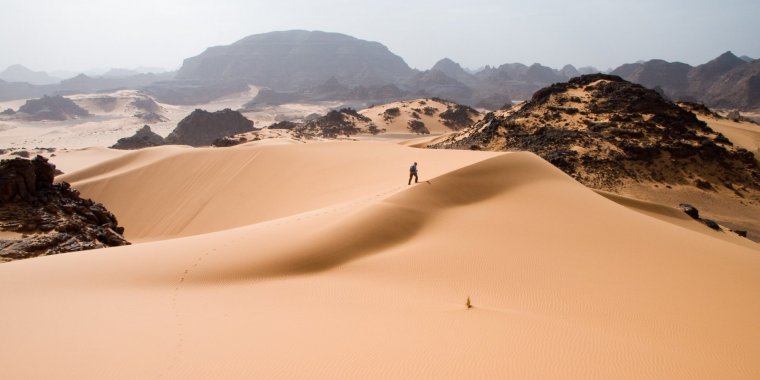| News / World News |
New study finds world’s largest desert, the Sahara, has grown by 10 percent since 1920
The Sahara Desert has expanded by about 10 percent since 1920, according to a new study by National Science Foundation (NSF)-funded scientists at the University of Maryland (UMD).

Africa's Sahara Desert is expanding, encroaching on savanna ecosystems. Image credit: Luca Galuzzi/NSF
Deserts are defined by low average annual rainfall -- usually 100 millimeters (less than 4 inches) of rain per year or less. The researchers analyzed annual rainfall data recorded throughout Africa from 1920 to 2013 and found that the Sahara, which occupies much of the northern part of the continent, expanded by 10 percent during this period.
When the scientists looked at seasonal trends over the same period, the most notable expansion of the Sahara occurred in summer, resulting in a nearly 16 percent increase in the desert's average area over the 93-year span covered by the study.
The results suggest that human-caused climate change, as well as natural climate cycles, caused the desert's expansion. The geographic pattern of expansion varied from season to season, with the largest differences along the Sahara's northern and southern boundaries.
Deserts usually form in the subtropics because of what's called Hadley circulation, through which air rises at the equator and descends in the subtropics. That circulation has a drying effect. Climate change is likely to widen this Hadley circulation, causing the northward advance of subtropical deserts. The southward creep of the Sahara suggests that additional mechanisms are at work.
The Sahara is the world's largest warm-weather desert, roughly equal in size to the contiguous United States.
Like all deserts, the boundaries of the Sahara fluctuate with the seasons, expanding in the dry winter and contracting during the wetter summer.
The southern border of the Sahara adjoins the Sahel, the semi-arid transition zone that lies between the Sahara and fertile savannas farther south.
The Sahara expands as the Sahel retreats, disrupting the region's fragile savanna ecosystems and human societies. Lake Chad, which sits at the center of this transition zone, serves as a bellwether for changing conditions in the Sahel.
The entire Chad Basin falls in the region where the Sahara has crept southward, and the lake is drying out. t's a very visible footprint of reduced rainfall not just locally, but across the whole region. It's an indicator of declining water in the Chad Basin.
Natural climate cycles can affect rainfall in the Sahara and the Sahel. The researchers concluded that these climate cycles accounted for about two-thirds of the total expansion of the Sahara.
The remaining one-third can be attributed to human-caused climate change. (National Science Foundation)
YOU MAY ALSO LIKE



